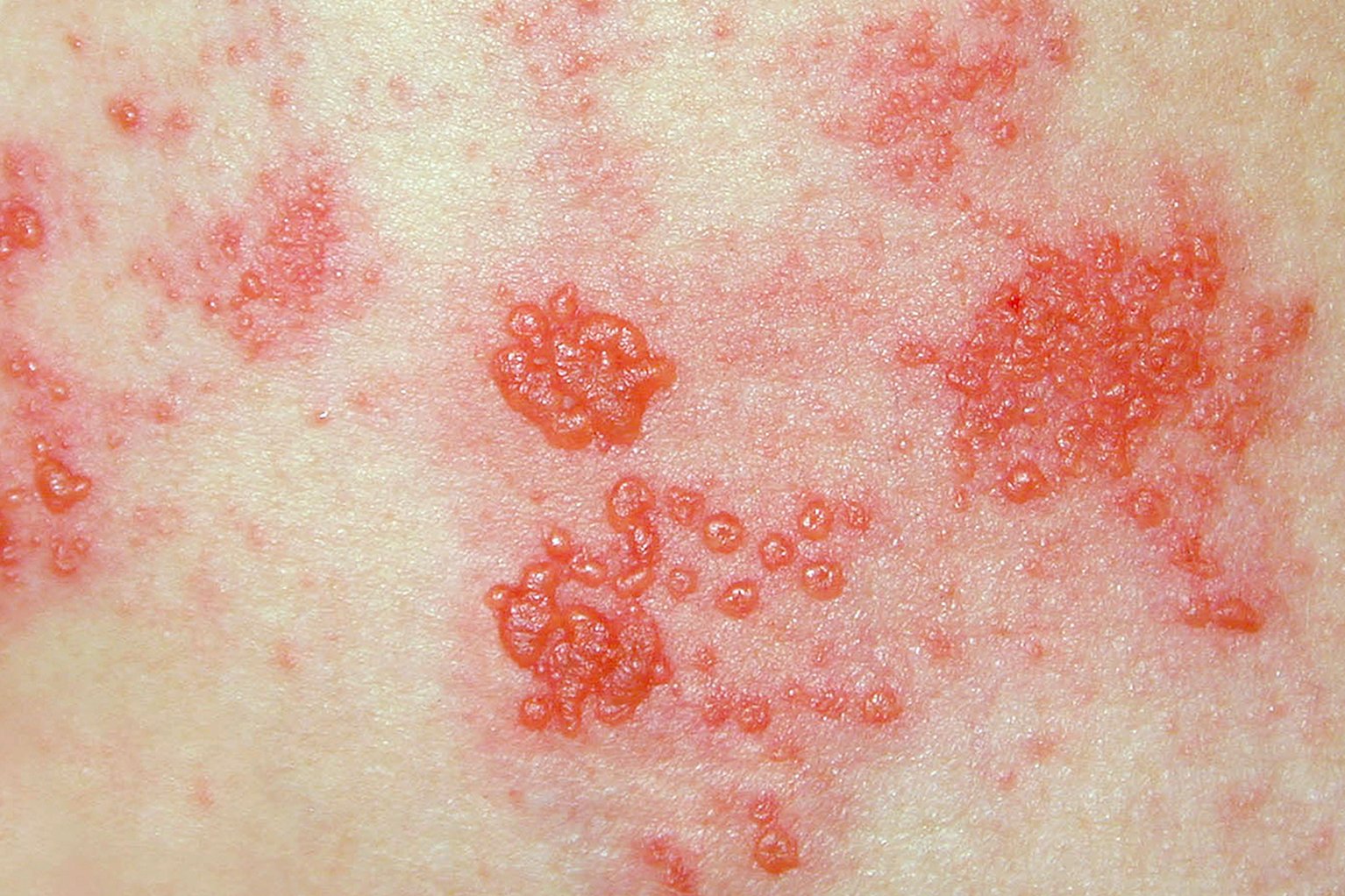Shingles (Herpes Zoster)

Definition
Shingles, also known as herpes zoster, is a viral infection that causes a painful rash. It is caused by the varicella-zoster virus, the same virus that causes chickenpox. After a person recovers from chickenpox, the virus remains dormant in the body's nerve tissues and can reactivate years later as shingles.
Aetiology
Shingles is caused by the reactivation of the varicella-zoster virus. This reactivation can occur due to a weakened immune system, which may be related to ageing, stress, or immunosuppressive conditions or treatments.
Pathophysiology
After a person recovers from chickenpox, the varicella-zoster virus lies dormant in the dorsal root ganglia. When the immune system is compromised, the virus can reactivate and travel along the nerve fibres to the skin, causing the characteristic shingles rash. The inflammation of the nerves results in the pain and discomfort associated with shingles.
Risk factors
- Age (risk increases with age, especially over 50)
- History of chickenpox
- Weakened immune system (e.g., HIV/AIDS, cancer, immunosuppressive drugs)
- Stress or trauma
- Certain medical conditions (e.g., diabetes)
Signs and Symptoms
- Pain, burning, or tingling sensation, usually on one side of the body or face
- Red rash that develops a few days after the pain
- Fluid-filled blisters that break open and crust over
- Itching
- Fever
- Headache
- Fatigue
- Sensitivity to touch
Red Flags
- Rash involving the eye or forehead (ophthalmic shingles)
- Severe pain or extensive rash
- Immunocompromised patients
- Signs of secondary bacterial infection (e.g., increased redness, swelling, pus)
Investigations
- Clinical history and physical examination, focusing on the characteristic rash and pain
- Polymerase chain reaction (PCR) testing of lesion samples if diagnosis is uncertain
- Blood tests to check for underlying conditions or immune status
- Referral to an optician if ophthalmic shingles is suspected to rule out eye complications
Management
Primary Care Management:
- Antiviral medications (e.g., aciclovir 800 mg five times daily for 7 days, valaciclovir 1000 mg three times daily for 7 days) to reduce the severity and duration of the infection
- Analgesics for pain relief (e.g., paracetamol, NSAIDs)
- Topical treatments (e.g., calamine lotion, lidocaine patches) to soothe the rash
- Gabapentin or amitriptyline for neuropathic pain if necessary
- Referral to a specialist or neurology if symptoms are severe, involve the eye, or if there are complications
Example Management for Shingles:
A patient presenting with shingles may be prescribed aciclovir 800 mg five times daily for 7 days. Pain can be managed with paracetamol 1000 mg every 6 hours as needed, and ibuprofen 400 mg every 8 hours if additional pain relief is required. For severe pain, gabapentin 300 mg at night, increasing gradually based on response, may be considered. Patients with a rash near the eye should be referred to an optician or ophthalmologist to rule out complications.
References:
- NICE. (2023). Shingles: Management. Retrieved from https://cks.nice.org.uk/topics/shingles-herpes-zoster/management/
- NHS. (2023). Shingles Overview. Retrieved from https://www.nhs.uk/conditions/shingles/
- O'Sullivan, S. B., & Schmitz, T. J. (2016). Physical Rehabilitation. 6th ed. F.A. Davis Company.
- Ropper, A. H., & Samuels, M. A. (2019). Adams and Victor's Principles of Neurology. 11th ed. McGraw-Hill Education.
- Cleveland Clinic. (2021). Shingles (Herpes Zoster). Retrieved from https://my.clevelandclinic.org/health/diseases/15232-shingles-herpes-zoster
Check out our youtube channel

